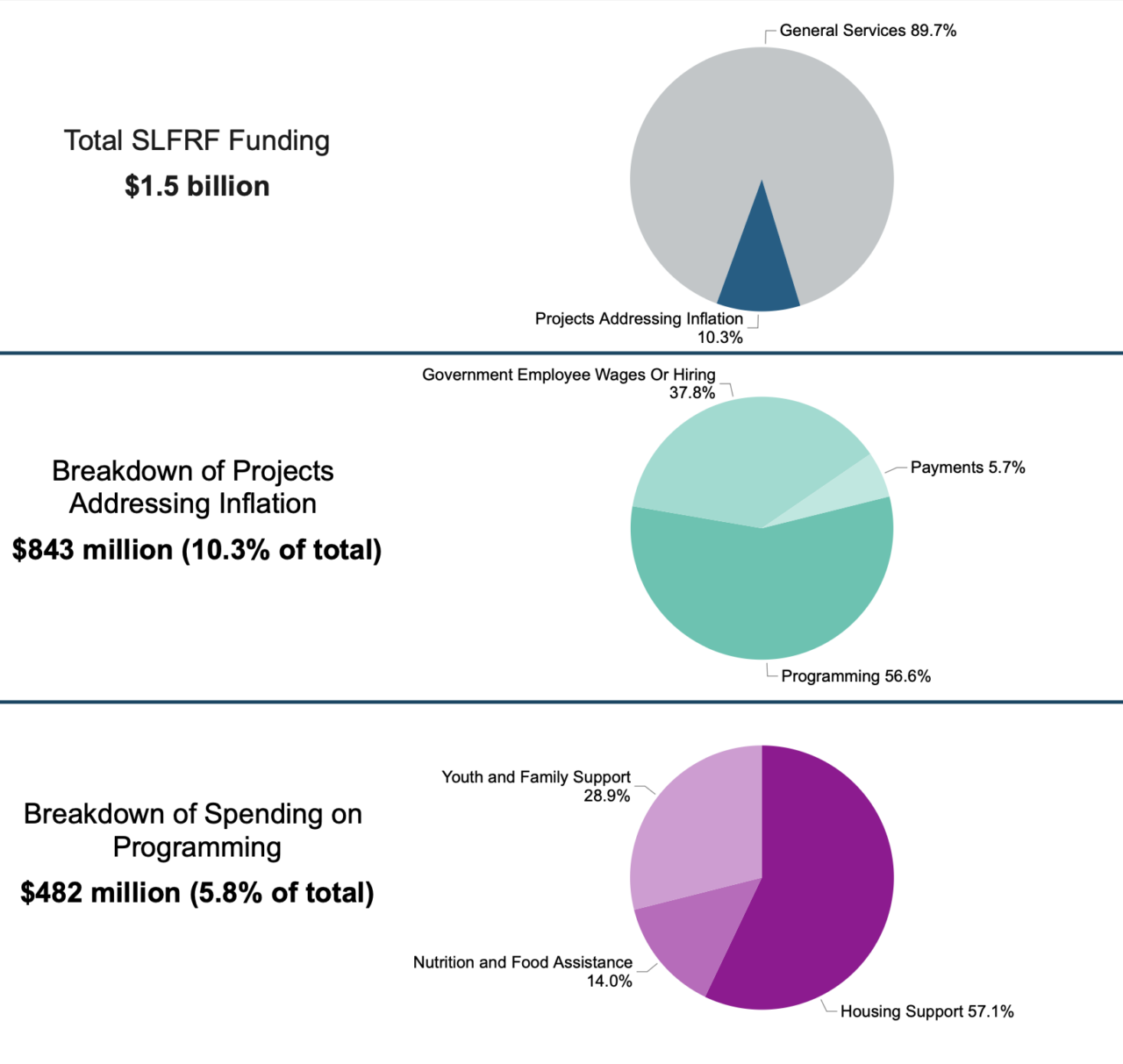The American Rescue Plan Act (ARPA) contained a lifeline for local governments – the State and Local Fiscal Recovery Funds program (SLFRF). SLFRF has led to consistent spending for normal government operations and services, helping local governments keep their communities running with minimal interruption.
SLFRF is also helping municipalities manage the impact of inflation on their most vulnerable residents. NLC, in partnership with Brookings Metro and the National Association of Counties (NACo), reviewed spending trends and developed over 40 spending categories to evaluate how localities are spending their SLFRF allocations.
To address the concerns of inflation, NLC reviewed these 40 spending categories and organized them based on if they support general services, including ongoing local government services such as fire safety, public space maintenance and revenue replacement, or if they directly assist residents by fighting inflation or supporting those impacted by inflation, whether through programming, government wages or direct payments. Although SLFRF was not originally intended to address inflation directly, local governments are making expenditures to help employees and hard-hit residents manage through the height of inflation.
Between the general services or inflation-fighting categories, 10 percent (or $1.5 billion) of budgeted funds go towards projects that assist individuals impacted by inflation. General service projects cover a range of projects, including:
- Nashville, TN, which allocated $4.7 million in SLFRF to its fire department for purchasing response vehicles and additional fire equipment and medical supplies.
- Orlando, FL, which invested $3 million in SLFRF to implement an evidence-based model of Community Violence Intervention between the police and parks and recreation departments.
Across funds allocated through ARPA that could address inflation, only about 6 percent ($84 million) were explicitly identified as direct payments to individuals. In general, direct payments have been targeted to low-income households to meet basic needs. The remaining payments were either government employee wages or hiring supporting city retention efforts ($563 million, or 38% of the funds expended in this group) or programming aimed at impacted individuals, which represented more than half of all funds expended in this group ($844 million, or nearly 57%).

Most of the spending for programming addresses inflation through multiple types of programs, including projects funding housing, nutrition and food, and youth and family support programming. Across these programs, cities allocated :
- $482 million to housing support programs
- $118 million to nutrition and food support programs
- $244 million to youth and family support programming
Housing support initiatives range from rental/mortgage assistance to eviction prevention programs, including:
- Virginia Beach, VA, which allocated $3.7 million in SLFRF to establish 65 emergency housing vouchers, in addition to the 35 vouchers provided by the Department of Housing and Urban Development (HUD).
Youth and family support includes youth programming, education, childcare, and more, including:
- Colorado Springs, CO, which allocated $652,000 to support after-school and summertime out-of-school programs for underserved populations.
Local governments are a sizable part of the economy, and local government performance impacts the economy in substantial ways. By including local fiscal recovery funds in ARPA, local governments have been able to continue meeting their basic obligations to residents and small businesses while fighting the spread of COVID-19. Local governments have also largely avoided making economy-damaging lay-offs without increasing overall spending and are meeting unanticipated needs to help those most vulnerable to setbacks stemming from inflation.
Federal relief to local governments has proven to be the right policy at the right time and has made an enormous difference for municipalities and the nation.
Learn More
The Local Government ARPA Investment Tracker houses local government SLFRF spending data to offer a detailed picture of how large cities and counties (with populations of at least 250,000) are allocating these funds. Learn more about ARPA and inflation with NLC’s fact sheet.










